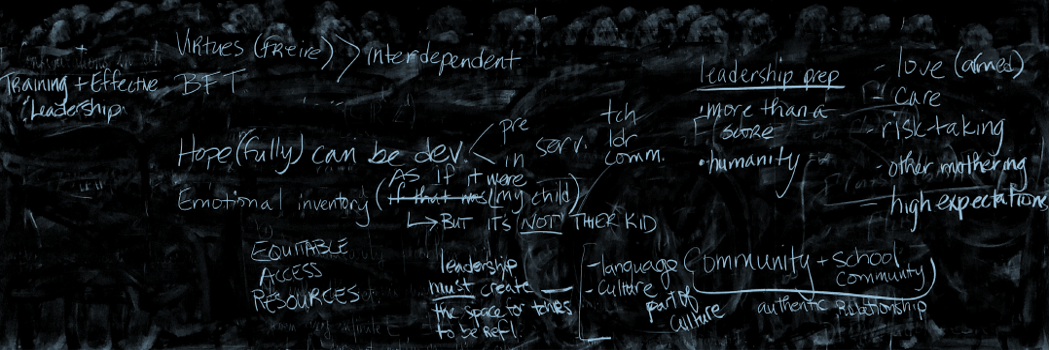The readings this week pushed me to grapple with my own disillusionment with the power that principals could have to make real transformative change in schools, or shape schools to be liberatory, in an oppressive school system. As Lomotey (1993) describes, I have seen the ways that principals experience the tension between the “bureaucrat/administrator” role and the “ethno-humanist” role. More often than not, the bureaucrat role wins out in a system full of problematic, racist structures and procedures that principals are left to interpret and enforce – including high stakes testing that reifies a white-washed curriculum and problematic measures of “success”, inflexible credit and graduation requirements, inadequate funding and complex budget requirements, and so on. At my last school, for example, my principal was so concerned about how student regents scores could affect the school’s rating and funding that he policed which students were allowed to sit for the exam – resulting in students feeling demoralized and frustrated, and teachers feeling constrained to teach to a test that was deeply problematic.
This tension made me think about our discussion last week, and the ways that the African-American women principals profiled in the articles named the explicit ways that they chose to actively operate against or outside specific policies in order to demonstrate radical care for their students – both as powerful acts of resistance and also as a frustrating reflection of the fact that policy in our school systems are shaped by oppressive forces rather than radical care.
The Khalifa et al reading created some openings and possibilities that gave me more of a sense of hope for what could be possible. As they write, culturally responsive school leadership is “not only liberatory and antioppressive, it is also affirmative” (p. 1278). They describe practices that encourage critical self-reflection, and a shift in school priorities that focus on “connections with other people and putting people and individual contextual circumstances before bureaucratic rules and regulations” in ways that “empower their students” (p. 1291). They highlight ways that principals can shift the measures that are used to evaluate the school – gathering information from families about their priorities, and “interrogating … exclusionary and marginalizing behaviors” from teachers – including disproportionate and racilaized discipline, and even making the “hard decision to counsel out those teachers who recognize this work is not for them” (p. 1281). I am still left wondering about how much change can be made without a total transformation of the system. I am also left wondering about the structure of principalship itself – is there another way to organize a school that doesn’t place a single principal as the ultimate leader and power-holder? That redistributes power and agency across the school’s stakeholders and community members?



